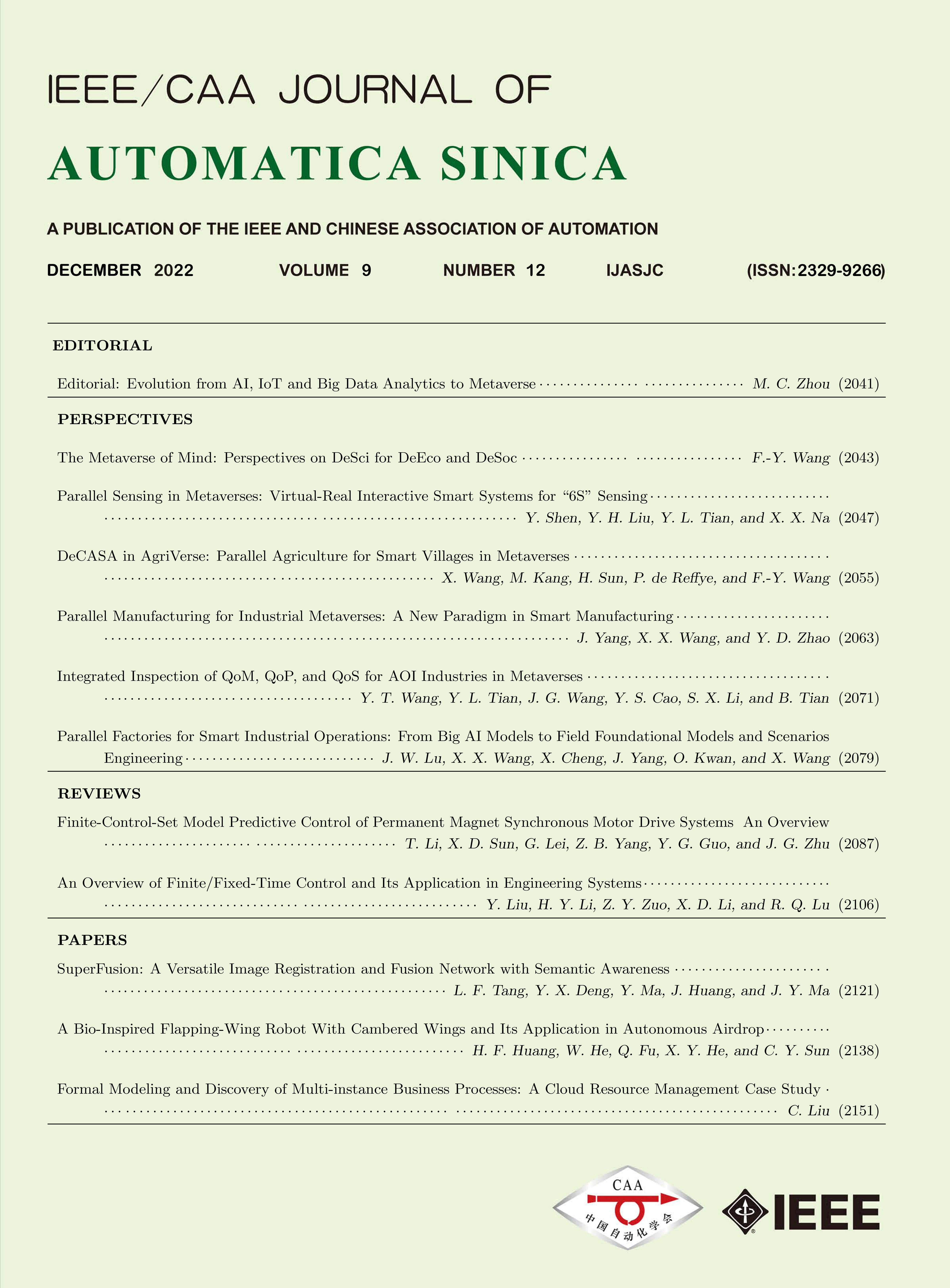 Volume 9
Issue 12
Volume 9
Issue 12
IEEE/CAA Journal of Automatica Sinica
| Citation: | H. Li, X. F. Wang, X. Huang, Y. F. Ma, and Z. H. Jiang, “Multi-joint active collision avoidance for robot based on depth visual perception,” IEEE/CAA J. Autom. Sinica, vol. 9, no. 12, pp. 2186–2189, Dec. 2022. doi: 10.1109/JAS.2022.105674 |

| [1] |
H. Wei, Z. Li, and C. L. P. Chen, “A survey of human-centered intelligent robots: Issues and challenges,” IEEE/CAA J. Autom. Sinica, vol. 4, no. 4, pp. 602–609, Oct. 2017. doi: 10.1109/JAS.2017.7510604
|
| [2] |
A. Zacharaki, I. Kostavelis, et al., “Safety bounds in human robot interaction: A survey,” Saf. Sci., vol. 127, no. 104667, Jul. 2020.
|
| [3] |
F. Flacco, T. Kröger, A. De Luca, et al., “A depth space approach to human-robot collision avoidance,” in Proc. IEEE Int. Conf. Rob. Autom., 2012, pp. 338–345.
|
| [4] |
H. Nascimento, “Collision avoidance interaction between human and a hidden robot based on Kinect and robot data fusion,” IEEE Robot. Autom. Lett., vol. 6, no. 1, pp. 88–94, Jan. 2021. doi: 10.1109/LRA.2020.3032104
|
| [5] |
J. H. Chen and K. T. Song, “Collision-free motion planning for human-robot collaborative safety under Cartesian constraint,” in Proc. IEEE Int. Conf. Rob. Autom., 2018, pp. 4348–4354.
|
| [6] |
F. Flacco, T. Kröger, A. De Luca, et al., “A depth space approach for evaluating distance to objects,” J. Intell. Rob. Syst., vol. 80, no. 1, pp. 7–22, Dec. 2015.
|
| [7] |
M. Dennis, K. Tobias, et al., “A constraint-based approach for human-robot collision avoidance,” Adv. Rob., vol. 34, no. 5, pp. 265–281, Mar. 2020. doi: 10.1080/01691864.2020.1721322
|
| [8] |
Y. H. Lee and K. T. Song, “Real-time obstacle avoidance with a virtual torque approach for a robotic tool in the end-effector,” in Proc. IEEE Int. Conf. Rob. Autom., 2021, pp. 8436–8442.
|
| [9] |
F. Flacco, A. De Luca, and O. Khatib, “Control of redundant robots under hard joint constraints: Saturation in the null space,” IEEE Trans. Rob., vol. 31, no. 3, pp. 637–654, Jun. 2015. doi: 10.1109/TRO.2015.2418582
|
| [10] |
O Wasenmüller and D Stricker, “Comparison of Kinect v1 and v2 depth images in terms of accuracy and precision,” in Proc. Asian Conf. Comput. Vis. Workshop, 2016, pp. 1–12.
|
| [11] |
Z. Sun, et al., “BIT-DMR: A humanoid dual-arm mobile robot for complex rescue operations,” IEEE Robot. Autom. Lett., vol. 7, no. 2, pp. 802–809, Apr. 2022. doi: 10.1109/LRA.2021.3131379
|
| [12] |
Y. Yang, L. Liao, H. Yang, and S. Li, “An optimal control strategy for multi-UAVs target tracking and cooperative competition,” IEEE/CAA J. Autom. Sinica, vol. 8, no. 12, pp. 1931–1947, Dec. 2021. doi: 10.1109/JAS.2020.1003012
|
| [13] |
R. W. Schafer, “What is a Savitzky-Golay filter,” IEEE Signal Process. Mag., vol. 28, no. 4, pp. 111–117, Jul. 2011. doi: 10.1109/MSP.2011.941097
|
 (Supplementary material)JAS-collision-avoidance.mp4
(Supplementary material)JAS-collision-avoidance.mp4
|

|